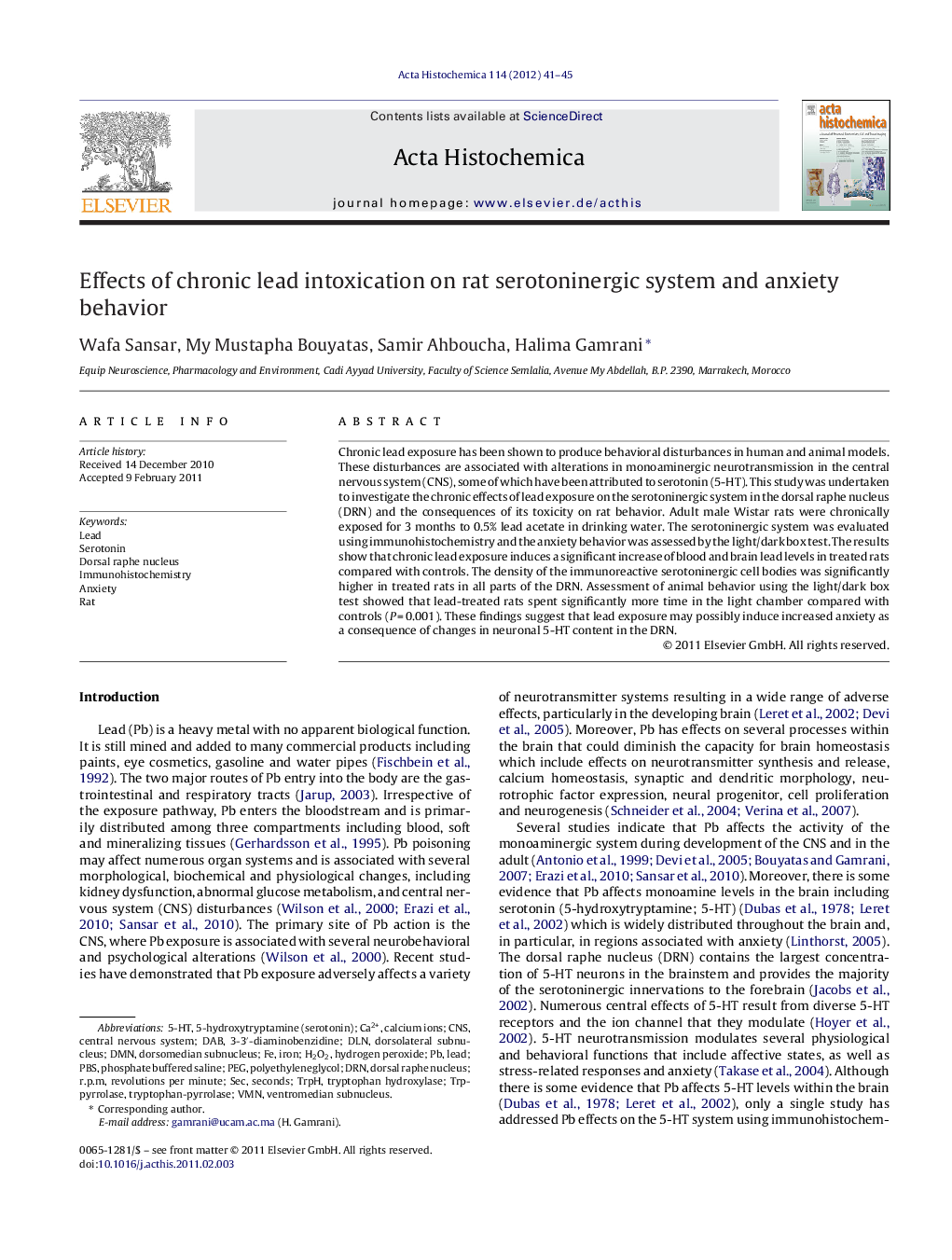| Article ID | Journal | Published Year | Pages | File Type |
|---|---|---|---|---|
| 1923827 | Acta Histochemica | 2012 | 5 Pages |
Chronic lead exposure has been shown to produce behavioral disturbances in human and animal models. These disturbances are associated with alterations in monoaminergic neurotransmission in the central nervous system (CNS), some of which have been attributed to serotonin (5-HT). This study was undertaken to investigate the chronic effects of lead exposure on the serotoninergic system in the dorsal raphe nucleus (DRN) and the consequences of its toxicity on rat behavior. Adult male Wistar rats were chronically exposed for 3 months to 0.5% lead acetate in drinking water. The serotoninergic system was evaluated using immunohistochemistry and the anxiety behavior was assessed by the light/dark box test. The results show that chronic lead exposure induces a significant increase of blood and brain lead levels in treated rats compared with controls. The density of the immunoreactive serotoninergic cell bodies was significantly higher in treated rats in all parts of the DRN. Assessment of animal behavior using the light/dark box test showed that lead-treated rats spent significantly more time in the light chamber compared with controls (P = 0.001). These findings suggest that lead exposure may possibly induce increased anxiety as a consequence of changes in neuronal 5-HT content in the DRN.
